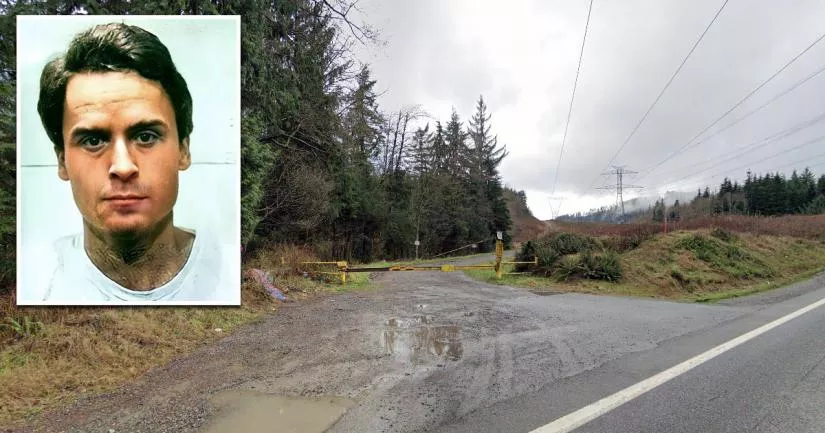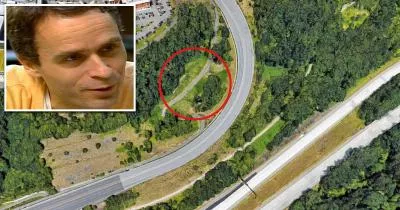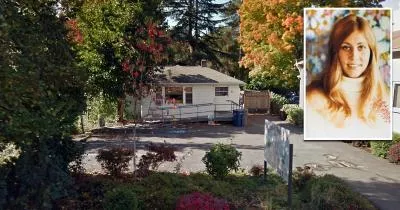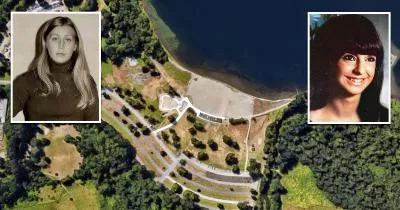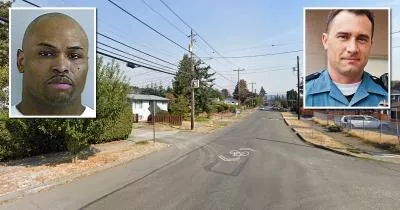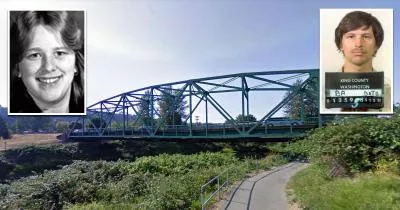Ted Bundy's site at Taylor Mountain
This is the Taylor Mountain site where serial killer Ted Bundy dumped the remains of at least four of his victims.
It is situated on Washington State Route 18, near the southern entrance to Tiger Mountain in Washington. The exact coordinates are available in the Location section below.
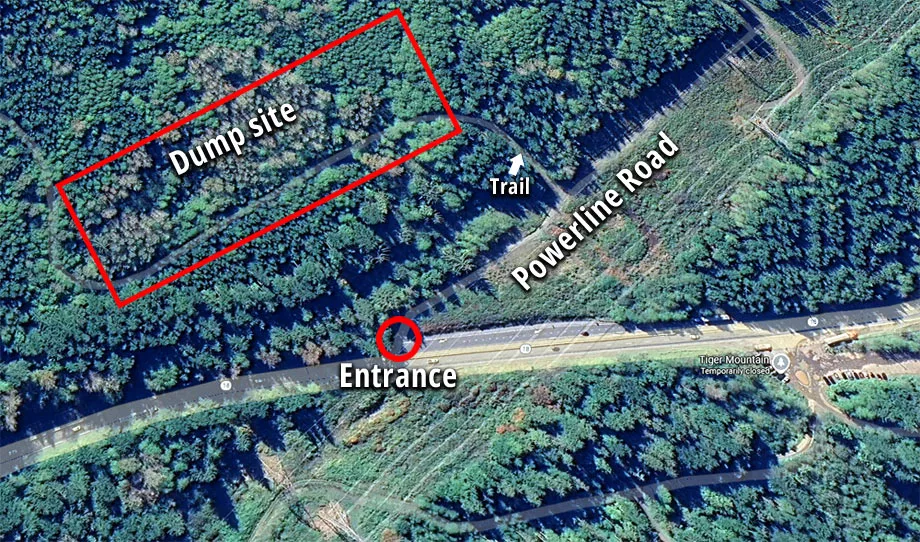
On Saturday, March 1st, 1975, two forestry students from Green River Community College were doing a project in these woods when they spotted a human skull lying among the damp, moss-covered trees.
After calling the police, the pair agreed to return the next day and lead them to the location.
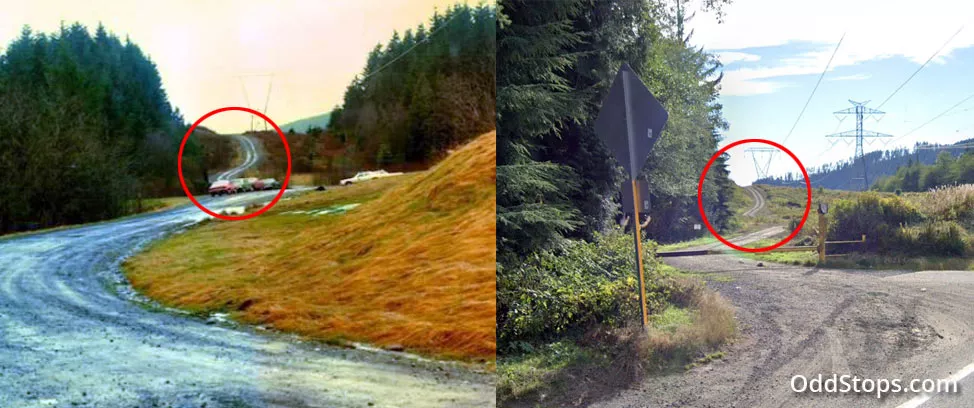
When King County detective Robert Keppel arrived at the scene the following afternoon, he quickly realized that the silver fillings on the upper teeth of the skull matched the dental records of Brenda Ball, a 22-year-old who had vanished from a dive bar in Burien nine months earlier.
Leaves from the previous autumn were inside the cranium, showing it had been lying in situ for months.
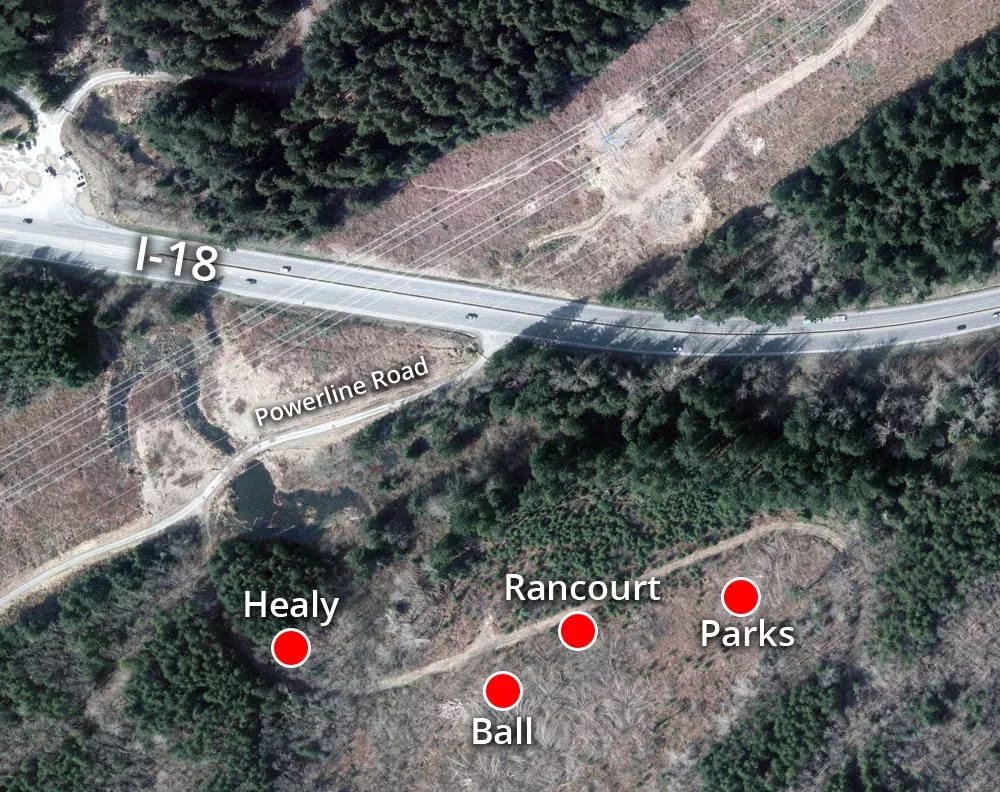
Although the authorities were aware that a killer calling himself "Ted" was targeting young women in the Seattle area, they did not believe that Ball's case was related to the other missing girls. In their opinion, the modus operandi and the victim profile didn't match.
However, the discovery at Taylor Mountain quickly proved them wrong.
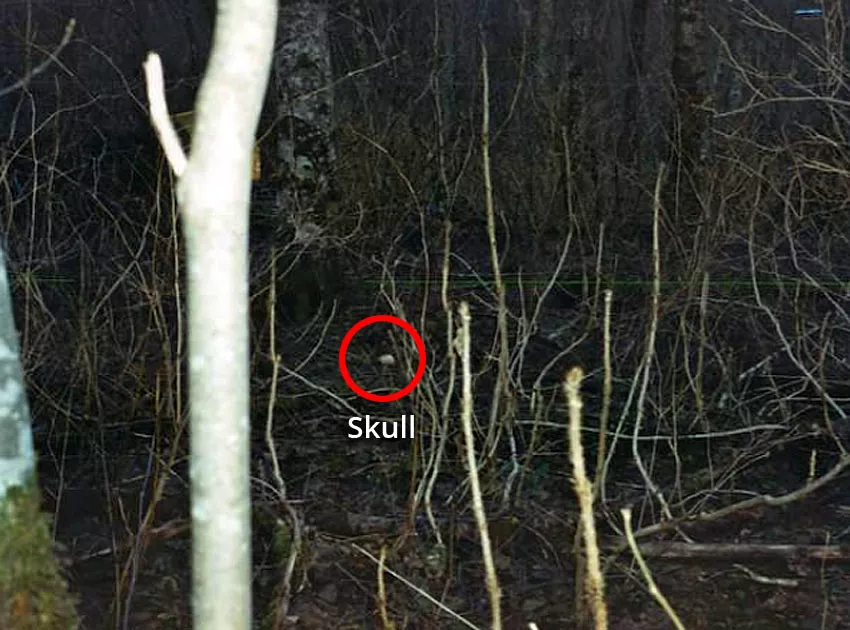
Another skull is found
During the second day of the investigation, Keppel was searching the wooded area for more of Ball's remains when he tripped over a branch and stumbled across an unexpected sight.
On the ground before him lay a second skull.
The victim was Susan Elaine Rancourt, an 18-year-old college student who had disappeared from Ellensburg in April 1974.
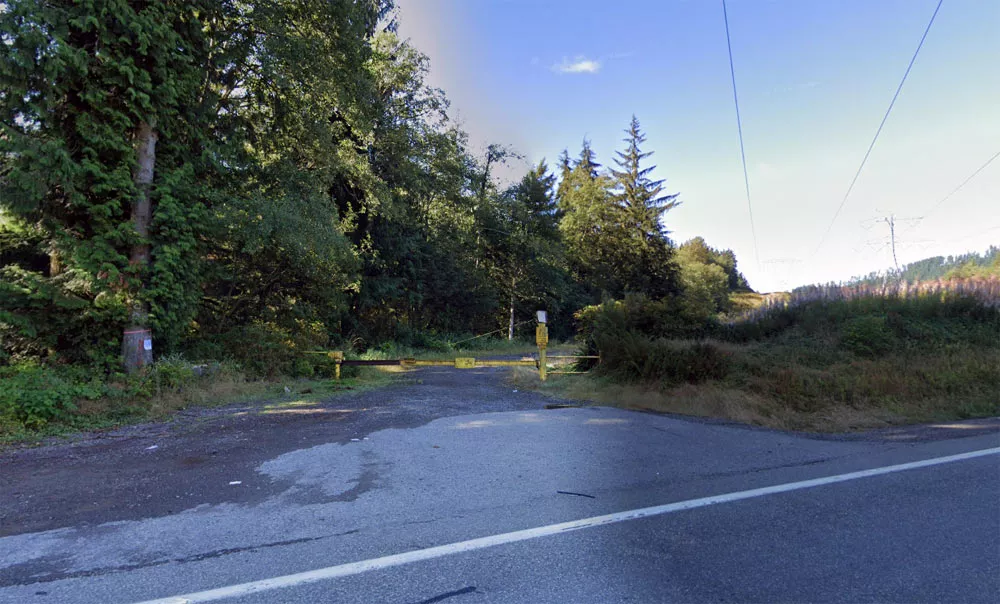
Once the initial shock wore off, it immediately dawned on Keppel that they were dealing with another one of "Ted's" dump sites. Six months earlier, a pair of grouse hunters had uncovered his other "burial site" in a wooded area near Issaquah, just 11 miles away.
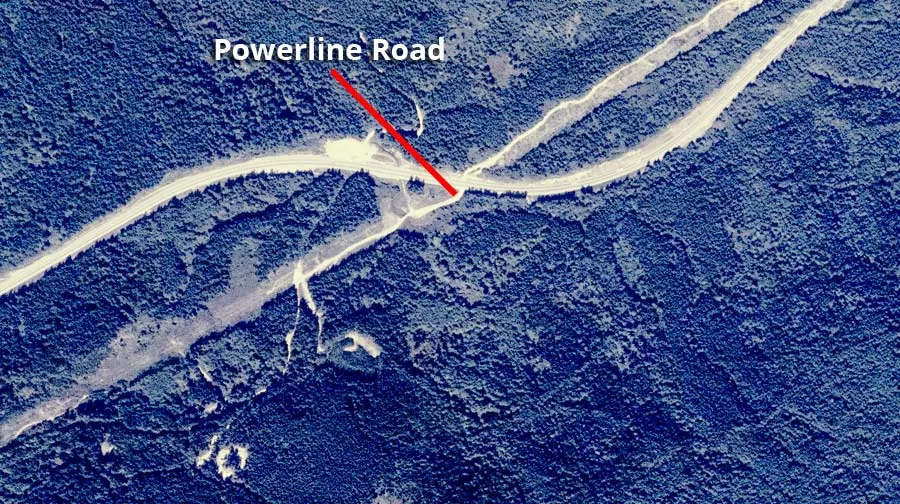
ESAR operation
Following the discovery, a large-scale operation was launched, and the police called in a team of search volunteers to comb the area for evidence.
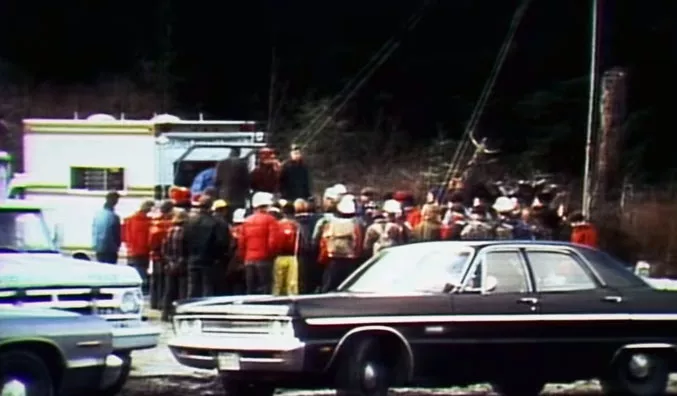
The site was described as being nightmarish. It was gloomy, dark, damp, and cold. At the time, it was carpeted with wet leaves.
One search volunteer likened it to something out of a Gothic movie. The lack of visibility inside the woods meant that the team needed flashlights to examine possible remains.
The vegetation was so thick that they struggled to see more than 15 feet ahead.
Keppel spoke to reporters at the site while the search was taking place:
"We keep finding more and more every day. You go into those woods, and you just don't know what's in there. It's so thick, so overgrown with bushes that you could find anything. A couple of minutes from now. A couple of hours from now. It doesn't matter."
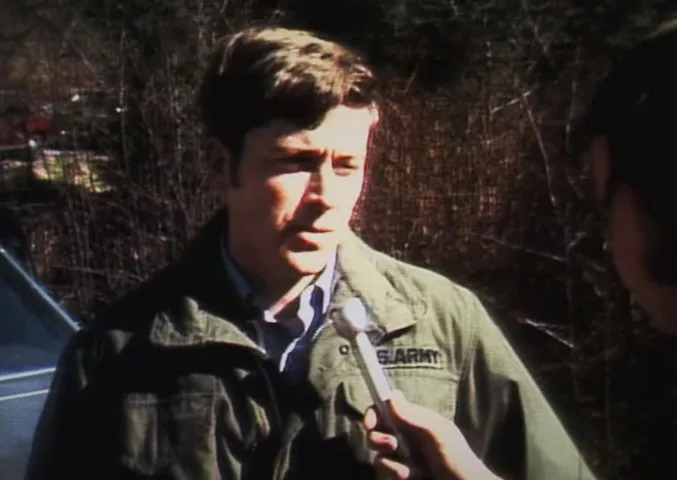
During the operation, ESAR volunteers found another skull and mandible. These remains proved to be a match against the dental records of missing women Roberta Kathleen Parks and Lynda Ann Healy.
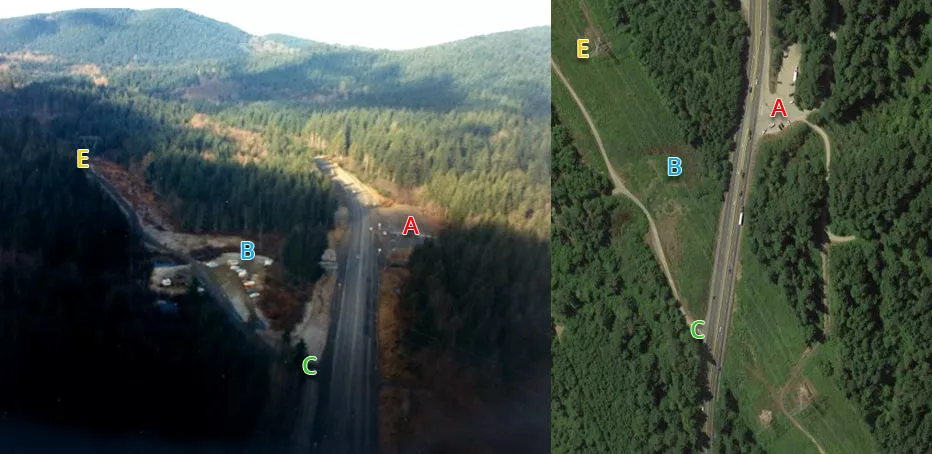
For years, Keppel was puzzled as to why they only seemed to find skulls at the site. However, it is likely that animal predation had already spread most of the other bones across the mountainside.
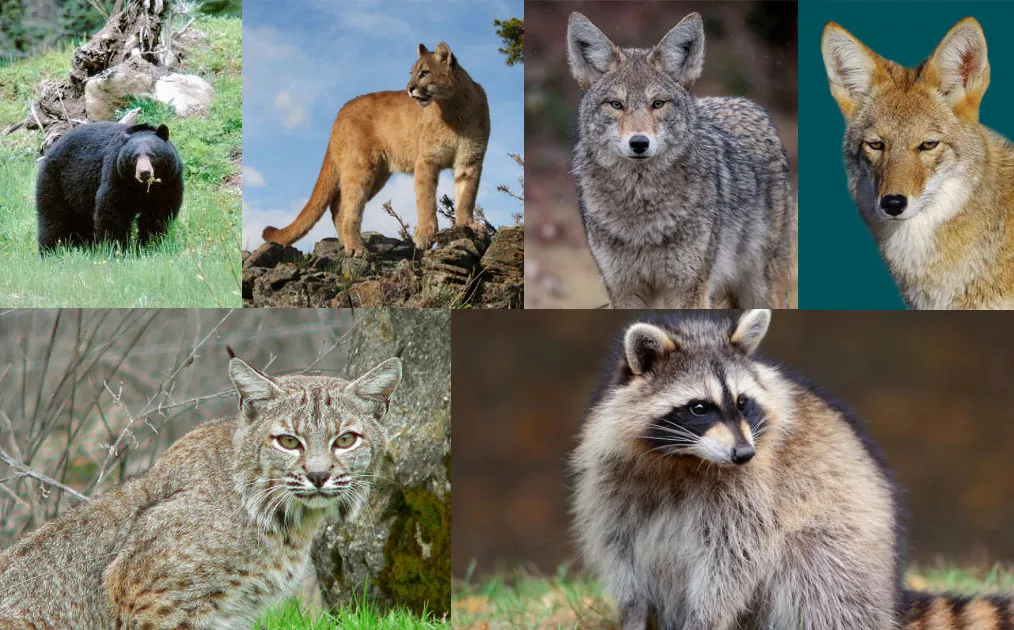
The last victim to be dumped at this location was Ball, who went missing on June 1st, 1974. Consequently, local wildlife had at least 274 days to interfere with the remains.
During his confession with Keppel in 1989, Bundy explained, "If the bodies aren't there, I think it's because the animals took everything. And where they took them, God only knows. They must have just chewed them up."
He also postulated that the animals left the skulls behind because they found them too difficult to break down:
"And why they leave the skulls the way they do. Maybe it's just because they're so hard to break up."
In 2008, DNA tests confirmed that some of the other bones had actually been found. However, the medical examiner at the time mistakenly classified them as animal bones.
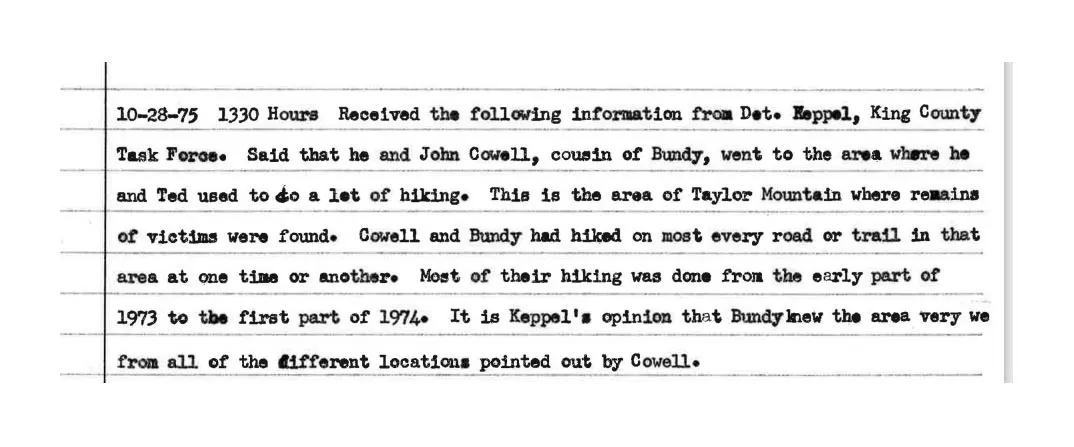
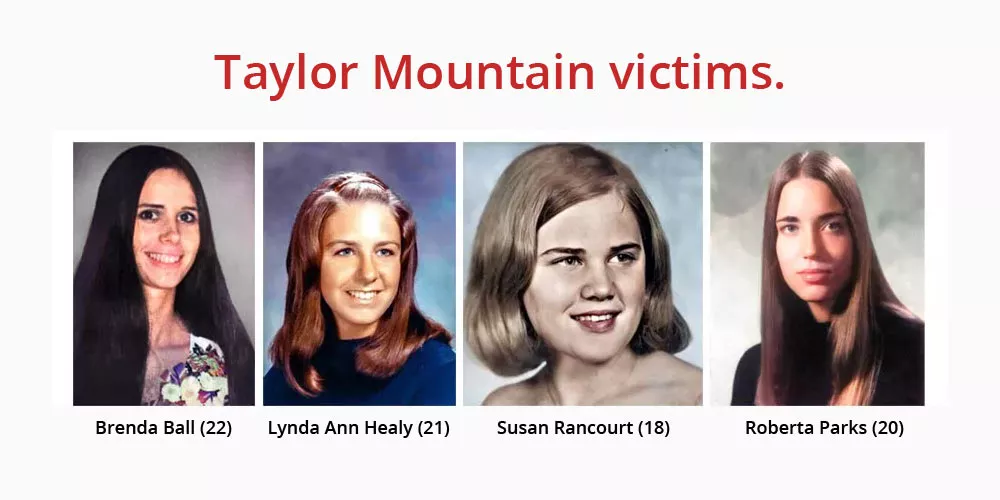
The find at Taylor Mountain forced Keppel and the other detectives to reevaluate their theories about the elusive "Ted." Up until that point, they believed that he was solely focusing on university campuses in and around the Seattle area.
Ball's murder made it clear that the killer was willing to switch up his M.O. by abducting hitchhikers. Furthermore, he had also strayed far outside of his comfort zone by kidnapping Parks from Corvallis, which was more than 250 miles south of Seattle.
Consequently, they were now starting to realize that the man they were looking for was prepared to branch out and vary his crimes.
Location
The address and GPS coordinates for the site are as follows:
Address
Taylor Mountain, King County, Washington, 98065, USA
GPS Coordinates
47.465586, -121.927695
47°27'56.11"N 121°55'39.70"W
Get Directions
Open this location in your preferred maps app:
Area Information
📍 The coordinates above will lead you to a gate that is roughly 0.2 miles east of the West Tiger Mountain parking lot. The site sits on the foothills of Taylor Mountain, on the southern side of Interstate 18.
Private Property Warning
This is private property, not a public space. Please respect the owners and do not enter without permission. Entry without permission is trespassing and may be met with legal or other serious consequences.
Comment: This land is owned by a private company called Sirios Timber Partners. Please do not trespass.
Photos
Photos of the site and other related images.
Bundy's dump site
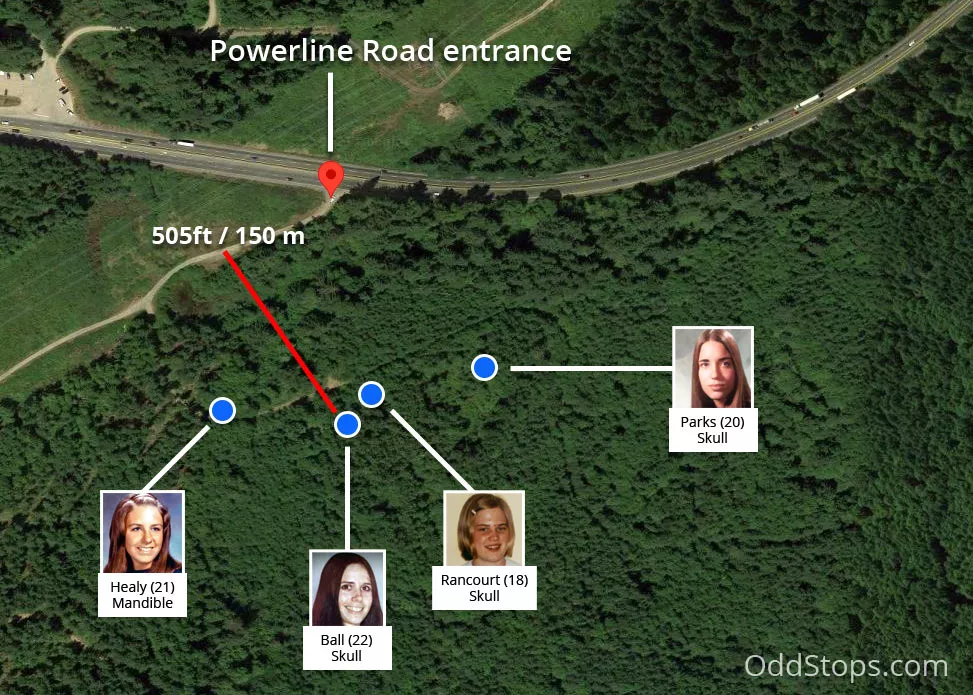
This satellite map of Taylor Mountain highlights the exact locations where the search team discovered the remains of Bundy's victims.
Keppel said that Ball's skull was roughly 1,000 feet away from Powerline Road. However, to be precise, it was actually 505 feet.
Because of the victims involved, it became immediately clear that this was his first "burial" site.
The authorities wrongly believed that the victims' bodies were buried elsewhere
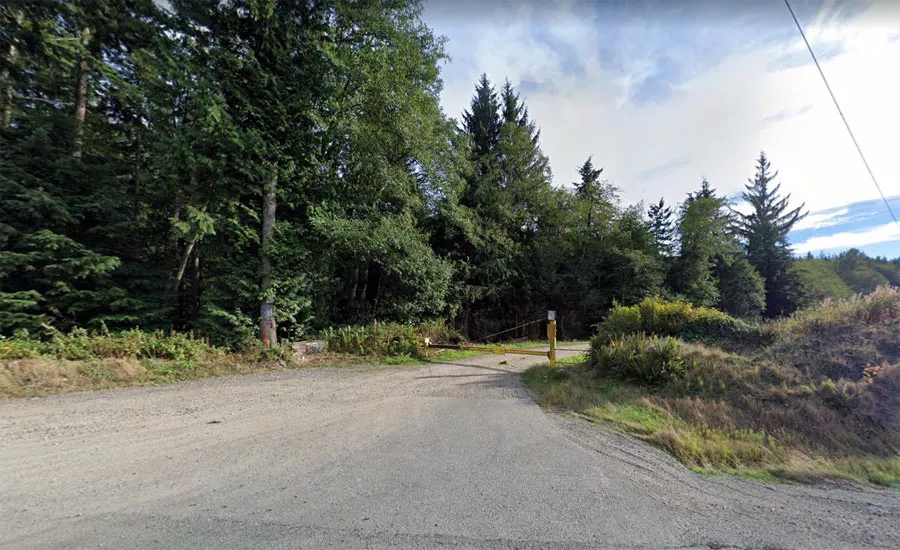
During an extensive search of the area, investigators discovered skulls, jawbones, and clumps of human hair.
Although Bundy claimed that he dumped five of his victims at the Taylor Mountain site, Keppel was skeptical.
It is approximately 500–800 feet from the powerline road to the dump site. Carrying a dead body across that kind of distance would be tiring and demanding, especially on such uneven and wooded terrain.
This, coupled with the apparent absence of other body bones, led Keppel to suspect that the rest of the remains were buried elsewhere.
However, DNA tests conducted in 2008 confirmed that Bundy was telling the truth. Other bones were discovered at the site. Unfortunately, the medical examiner at the time incorrectly determined that the bones belonged to animals.
During prison interviews, Bundy told investigators that he severed the heads of twelve of his victims.
For example, shortly before his execution, Bundy admitted to severing the head of Georgann Hawkins and burying it at a separate location in Issaquah. Bundy said that he did this to hinder her identification and impede any future investigation into the crime.
In Keppel's book The Riverman, he claims that FBI profiler Bill Hagmaier told him that Bundy admitted to keeping "as many as four heads" at his rooming house in Seattle.
If this apartment story is true, then it raises many questions about the timeline of events.
Did Bundy keep the heads of Ball, Rancourt, Healy, and Parks from the start? Or did he retrieve them from Taylor Mountain at a later date, after they had become skeletonized? Or was this yet another example of him lying?
It is the author's opinion that he may have been toying with the "hot shot" profiler from Quantico and possibly trying to inflate his notoriety.
Bundy claimed that he also buried Donna Manson at Taylor Mountain
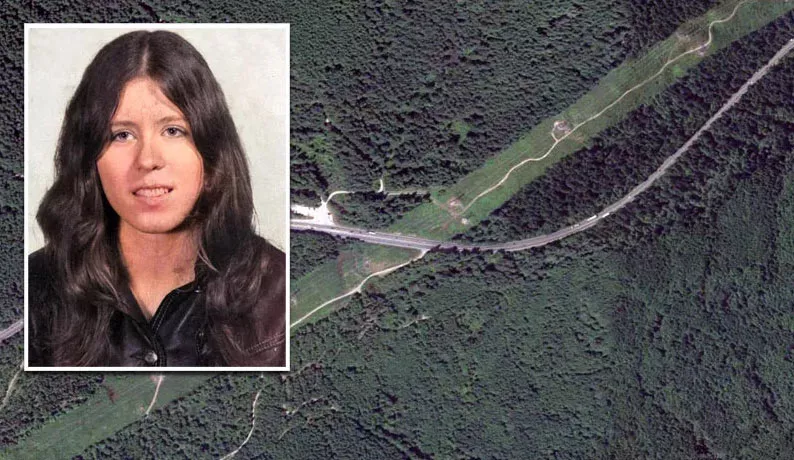
Bundy claimed that he also buried Donna Gail Manson at Taylor Mountain. However, he said that he buried her body in a different area that was further along the powerline road.
Manson was Bundy's second murder victim. His decision to bury her remains in a different location suggests that his original plan was to vary his dump sites and keep his victims apart.
However, following Manson's murder, it seems as though he reverted back to using the original location.
The most likely explanation for this is that Bundy was beginning to feel less cautious. By the time he abducted his third victim, his confidence had grown, and the first signs of complacency were beginning to creep in. As a result, he no longer felt the need to make such an effort.
Typically, serial killers become more and more careless as time goes on. Interestingly, Bundy actually touched on this topic during one of his prison interviews:
"You learn what you need to kill and take care of the details. The first time you're careful. By the 30th time, you can't remember where you left the lug wrench."
Bundy was often under the influence during his crimes, as alcohol gave him Dutch courage. Therefore, his slip into overconfidence may have occurred much earlier than expected.
No trace of Manson has ever been found. Following Bundy's confession, two searches of the suspected site failed to turn up anything of note.
DNA testing proves the animal predation theory
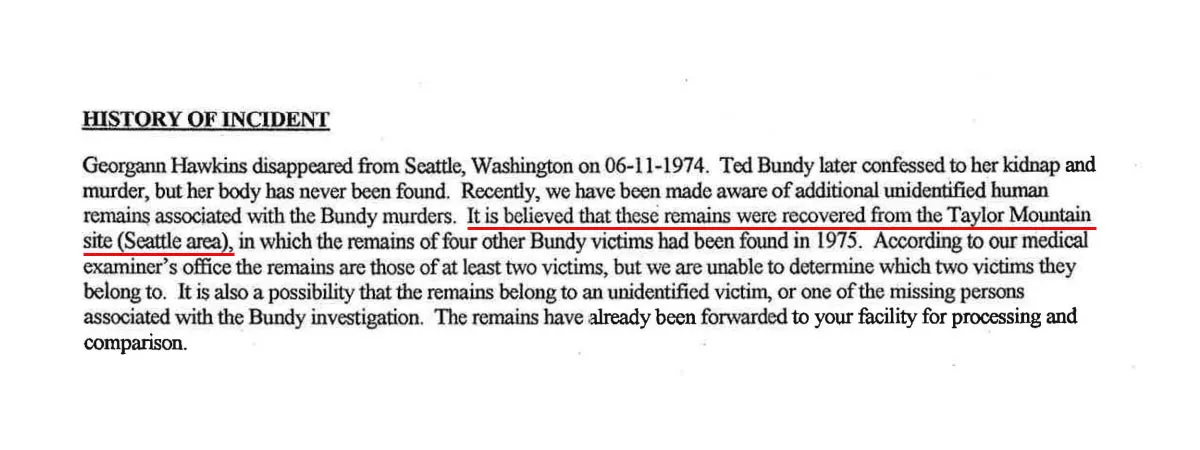
In 2005, the King County Medical Examiner's Office discovered a bin full of bones pertaining to the Taylor Mountain case. Although most of these bones clearly belonged to animals, at least twelve of them were determined to be human. The bin contained at least one fibula and two tibias (lower leg bones).
Following the discovery, the authorities proceeded to contact the families of Bundy's Washington victims and ask them to provide DNA samples.
All of the families cooperated, except for the family of Lynda Ann Healy.
Healy's brother, Robert Healy, refused to cooperate on the basis that his family had closed that chapter in their lives.
In 2006, the DNA samples and bones were sent to the University of North Texas for testing.
More than two years later, the results finally came back. Four of the bones belonged to Ball, two belonged to Parks, and one belonged to Rancourt. The other five bones belonged to an unidentified individual, whom the police believe is Healy.
These DNA results support Bundy's claim that he dumped the four women's remains at Taylor Mountain.
This location belongs to the following categories:
Crime ScenesSerial KillersTed Bundy Seattle LocationsTed Bundy LocationsClosest Locations
Other locations that are relatively close to this address:
The park where Ted Bundy abducted Janice Ott and Denise Naslund
Roughly 11 miles away.
Crime Location in Issaquah, Washington
The street where Maurice Clemmons was killed
Roughly 21 miles away.
Place of Interest in Seattle, Washington
The bridge where Wendy Lee Coffield was found
Roughly 21 miles away.
Crime Location in Kent, Washington
